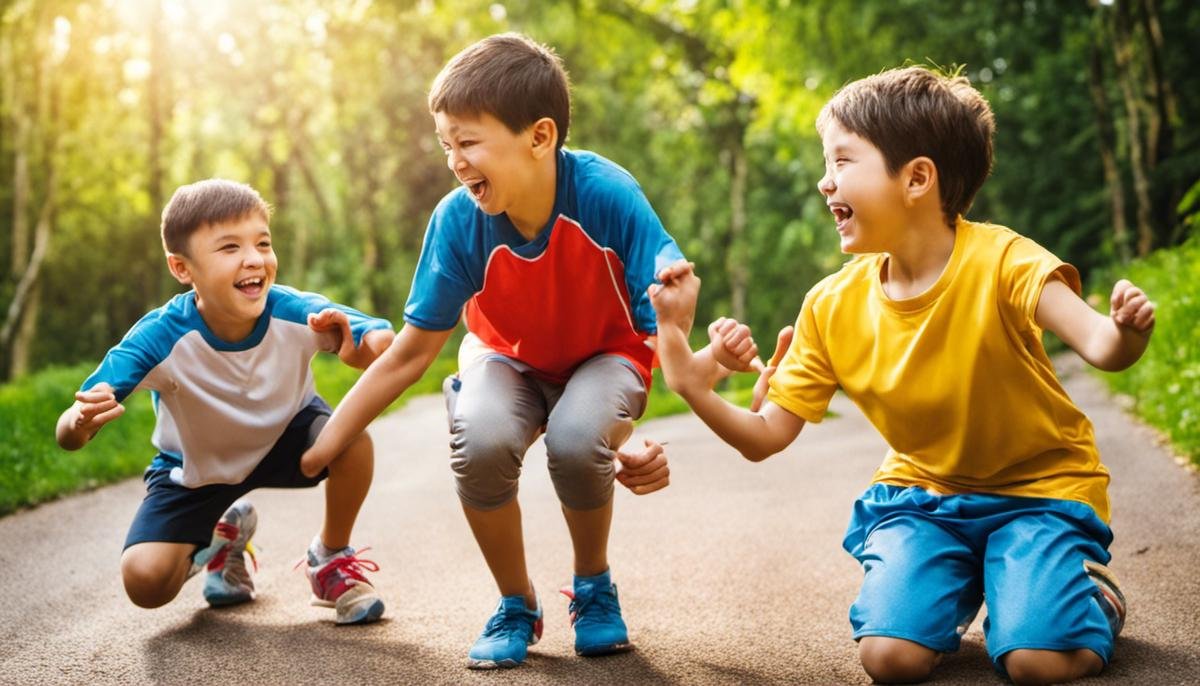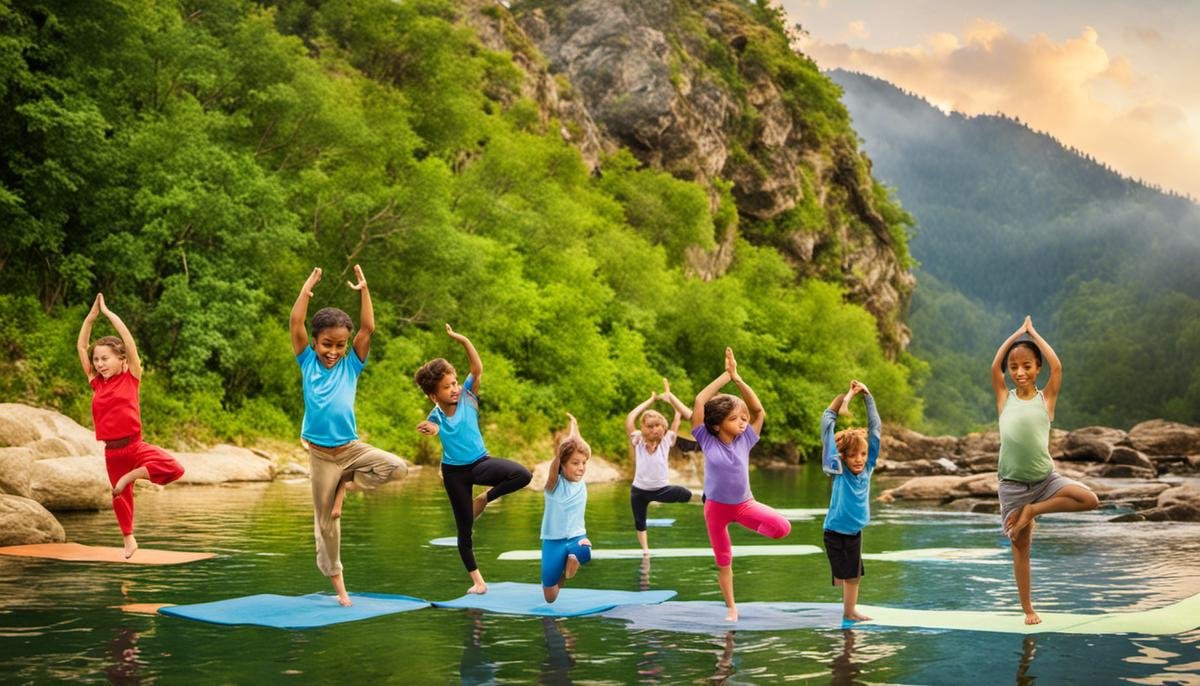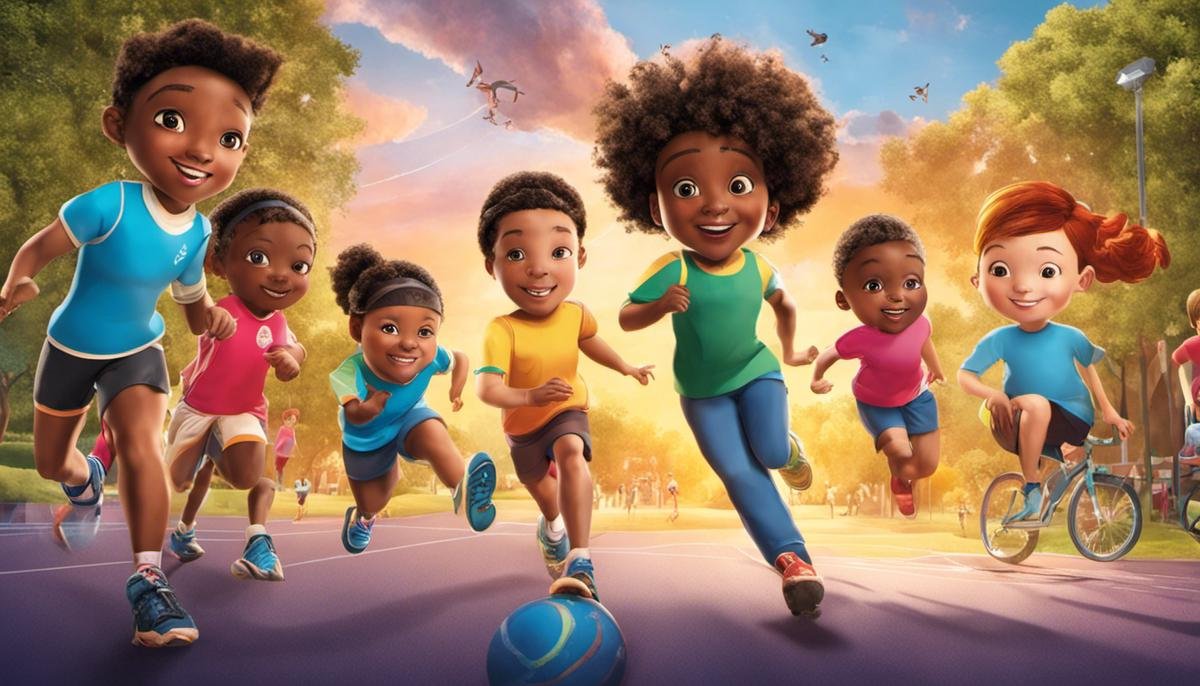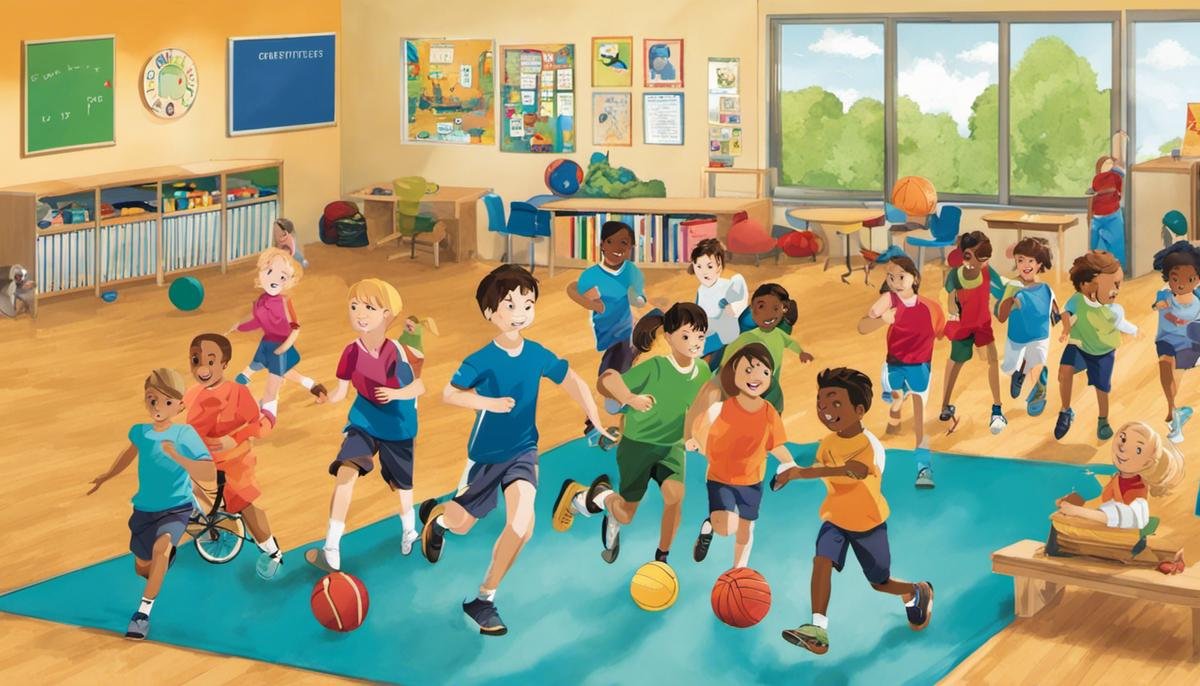
Given the rate at which autism spectrum disorder (ASD) is growing in our society, it’s time that we consider unique, creative, and efficient methods to enhance the quality of life for children diagnosed with this condition. Placing a significant focus on physical activities and exercise can be one of those strategies. Engaging in physical activity is not just a means for these children to have fun, but it also serves as an avenue to improve their cognitive abilities, social interactions, mental, and physical health. This emphasis on the vital role of active play and exercise for children with autism sets the platform to discuss several important aspects in the ensuing sections.
Benefits of Exercise and Physical Activities for Children with Autism
Fostering Growth and Joy: The Impact of Physical Activities on Children with Autism
Imagine the joy, the exhilaration, the sense of accomplishment that comes with sticking to a new exercise routine or mastering a challenging sport. Now, think about how these transformative experiences can be even more powerful for children on the autism spectrum. The benefits of physical activities for children with autism are wide-ranging, helping these youngsters tap into a world of improved physical, mental, and social well-being.
Exercise isn’t just about physical health; it strongly contributes to mental stamina as well. For a child with autism, engaging in regular physical activity can lead to significant improvements in areas traditionally challenged by autism symptoms. This is achieved through the establishment of healthy routines, which can reduce anxiety and promote better sleep. Combined, these factors can usher in a heightened sense of calm and order, empowering an autistic child to thrive.
Routine physical activity also enhances focus. For anybody in the midst of a workout, the world narrows down to the present moment, concentrating effort and energy into the task at hand. For children with autism, this singular focus can have profound impacts on cognitive functions. Regular exercise can help improve attention spans and decrease hyperactivity, giving kids an ideal platform from which they can take on the world.
Let’s not forget the interactive angle of being physically active too. Many sports and recreational activities are social in nature, making them a veritable playground for honing social skills. Participating in such activities presents opportunities for children with autism to interact with peers, thereby fostering a sense of camaraderie and mutual understanding. This means building essential social skills while working towards a common goal, which can be a real confidence booster.
Then there’s the side of physical activities that emphasizes gross and fine motor skill development. Whether it’s shooting a ball through a basket, moving across a jungle gym, or just taking a walk in the park, these activities can enhance coordination and balance. And for children with autism, who often struggle with motor skills, this can mark a significant step in their physical development.
To top it off, engaging in physical activities can also open up a channel for expression and communication. Through different sports and activities, children with autism can explore and express how they feel, nonverbally. This emotional outlet can facilitate their engagement with others, significantly improving their communication proficiency.
Indeed, the power of physical activities extends way beyond just health benefits. In the case of children with autism, it can help unlock their potential and foster a sense of fulfillment. Exercise, sports and physical activities are more than just a pastime; they represent building blocks for a happy and healthy growth journey. As parents, it’s an avenue worth exploring for the overall well-being and development of our kids. So let’s cheer them on and watch them grow, one game, one sport, one activity at a time.

Optimal Types of Exercise for Children with Autism
Best Physical Activities and Exercises for Autistic Children
We all understand the importance of physical activities, not only for the physical wellbeing of our children but also for their holistic development. When it comes to our little ones who fall under the autism spectrum, physical activities take on an even more critical role. Further in this article, we’ll delve into the top physical activities that can benefit and develop the cognitive abilities of our differently-abled wonders with autism.
Yoga for Children with Autism
When thinking about exercises suitable for children with autism, yoga undeniably tops the list. This mind-body practice is renowned for its calming effects. Yoga exercises can be adapted according to each child’s needs and abilities, helping them improve their body awareness, balance, and coordination. More so, kids can learn essential skills like patience and relaxation, which can greatly assist in managing the sensitivities typically associated with autism.
Swimming as a Therapeutic Exercise
Swimming is a highly therapeutic exercise for children on the spectrum. The water provides a unique sensory experience, enabling the children to improve their strength, motor skills, and coordination in a fun and soothing environment. Additionally, swimming lessons can provide opportunities for social interaction, promoting the development of communication skills.
Hiking for Sensory Stimulation
Hiking is another excellent activity for children with autism. The great outdoors is a haven for sensory stimulation – the different textures of rocks, the rustling of leaves, or the soft murmur of a running stream. Hiking can provide endless possibilities for exploration, discovery, and connection with nature, further allowing these children to improve their physical strength and endurance.
Taekwondo for Self-Discipline
A more structured activity, such as Taekwondo or other martial arts, can also be beneficial. These activities offer repetitive patterns and rhythms, elements that many children with autism appreciate. Taekwondo not only promotes physical fitness but also emphasizes self-discipline, respect, and self-control. Participating in such exercise infuses them with an increased sense of self-confidence and accomplishment.
Dance and Music for Emotional Expression
Physical activities that incorporate music, like dancing or rhythm gymnastics, have profound effects on children with autism. Music and movement can serve as a valuable resource for expressing emotions, improving balance and coordination, and enabling healthier sensory integration. Meanwhile, participating in group dance sessions encourages children to interact with their peers.
In conclusion, it’s important to provide children with autism access to a variety of physical activities tailored to their interests and abilities. The goal isn’t necessarily to create star athletes but more so to engage children in physical activities that promote their overall health, wellbeing, and happiness. Always remember, what works best will vary from child to child, fostering an environment that aids in their ability to shine.

Incorporating Physical Activities into Daily Routine
Creating Opportunities for Physical Activity: A Parent’s Guide to Engaging Children with Autism
Boosting a child’s physical activity level often brings about a healthy helping of challenges. Doing so for a child with autism might appear a daunting task, but it is of utmost importance to remember that limitations are only stepping stones to new opportunities. In continuation of our earlier discussions, let’s delve into the specifics—on ways to integrate and facilitate physical activities into the lives of children with autism.
Yoga for Children with Autism
For children on the spectrum, yoga can be a serene and peaceful physical practice that helps encourage body awareness, flexibility, and calmness. Featuring controlled breathing and smooth, deliberate movements, yoga presents a non-competitive and relaxing exercise atmosphere and can be tailored specifically to the skills and comfort level of each child.
Swimming as a Therapeutic Exercise
Aquatic activities like swimming have shown immense therapeutic potential for children with autism. The buoyancy and sensory stimulation from water provide a unique, soothing environment that supports bodily movement. Moreover, swimming helps improve muscle strength, coordination, and balance, while also instilling vital life skills and boosting confidence.
Hiking for Sensory Stimulation
The bright colors, soft sounds, and diverse textures in nature can be fascinating sensory stimulus for many children with autism. Hiking, whether in the tranquil woods, a nearby park, or simply following a trail, can provide an enjoyable and invigorating workout. It encourages curiosity, exploration, and can contribute to reducing sensory overstimulation, a common challenge for children with autism.
Taekwondo for Self-Discipline
Martial arts like Taekwondo not only promote physical fitness but also emphasize self-discipline and respect. For a child with autism, being part of such a structured environment can be beneficial in managing repetitive behaviors while improving focus, balance, and coordination. It boosts their confidence and generates pride in individual accomplishments.
Dance and Music for Emotional Expression
Dance and music therapies are expressive and creative outlets for children with autism. They facilitate emotional expression, social engagement, and enhance motor skills, while also serving as a fun form of exercise. Enjoying rhythmic movements to music can create an uplifting environment, making the child feel thoroughly engaged and appreciated.
Each of these activities can be adapted to suit the needs and capabilities of a child with autism. Going hand in hand with your child on this journey is as essential as understanding what works best for them. Remember, every child with autism is unique, just like their preferences for physical activities. Therefore, exercise alternatives should be introduced progressively and patiently, encouraging them to set their own pace. What’s important is that we, as parents, help our children find joy, confidence, and fulfillment through these routines, creating an environment filled with love, support, and endless encouragement for our extraordinary little champions.

The Role of Schools and Communities in Encouraging Exercise
Role of Schools and Communities in Fostering Physical Activity for Autistic Children
Starting off with a warm welcome, we all know now that physical activities are tremendously beneficial for children, specifically those with autism. It’s easy to see the role of parents in incorporating physical activities into their child’s routines, but have we stopped to ponder how schools and communities factor in?
Schools, the second home for every child, can act as the primary platform for promoting physical activities among children with autism. By inclusion in the standard Physical Education (P.E.) classes, special-needs adaptive physical education, or school-based sports clubs, schools provide an avenue for regular physical activities and foster inclusivity. The skills gained from P.E., from gross and fine motor skills to teamwork and respect for rules, are as essential for children with autism as for any other child.
Moreover, schools can arrange for sports activities specifically targeted towards children with autism. Offering sessions in therapeutic exercises such as yoga, swimming, or taekwondo during or after school hours can reinforce the healthy habit of engaging in physical activities. Here, teachers and coaches have a vital role to play—they can spice up the sessions with engaging games and collaborative activities that children with autism find appealing.
Now, moving outward from the school campus, let’s consider our communities. The broader community can further encourage physical activity among children with autism by providing suitable facilities and inclusive recreational programs.
Local community centers, parks, and sports clubs can partner with autism support groups to cultivate a welcoming environment for children with autism. Sports tournaments or ‘fun days’ geared towards these children not only promote physical activity but also build social interactions and strengthen community bonds.
Communities can also take an active role in dispelling misconceptions about the capabilities of children with autism. By holding public events showcasing the talents and abilities of these children, communities can foster greater empathy and inclusion.
Furthermore, facilities like sensory-friendly trails for hiking or walking clubs can act as catalysts for encouraging physical activities among children with autism. Dance and music groups devoted to emotional expression could strike a chord with these children, making the experience enjoyable and therapeutic simultaneously.
So, our schools and communities are not simply spectators but active players in promoting physical activities among children with autism. It’s about building a support system that goes beyond the family to harness the full potential of these talented young minds. Let’s step up and shape a future that’s strong, compassionate, and inclusive, backed by the power of physical activity!

A child with autism, like any other child, deserves to experience the joy and bountiful benefits of physical activity. By identifying the right type of exercise that cat in the haters to their unique needs, integrating these activities into their daily routines and eliciting the support of schools and communities, we set the stage for their improved cognitive, social, and overall health. Ultimately, fostering an environment that encourages and celebrates each small victory of these children on their personal fitness journeys helps to paint a brighter, healthier future for them. Because even though autism makes their journey different, it doesn’t make it any less rewarding or important.




